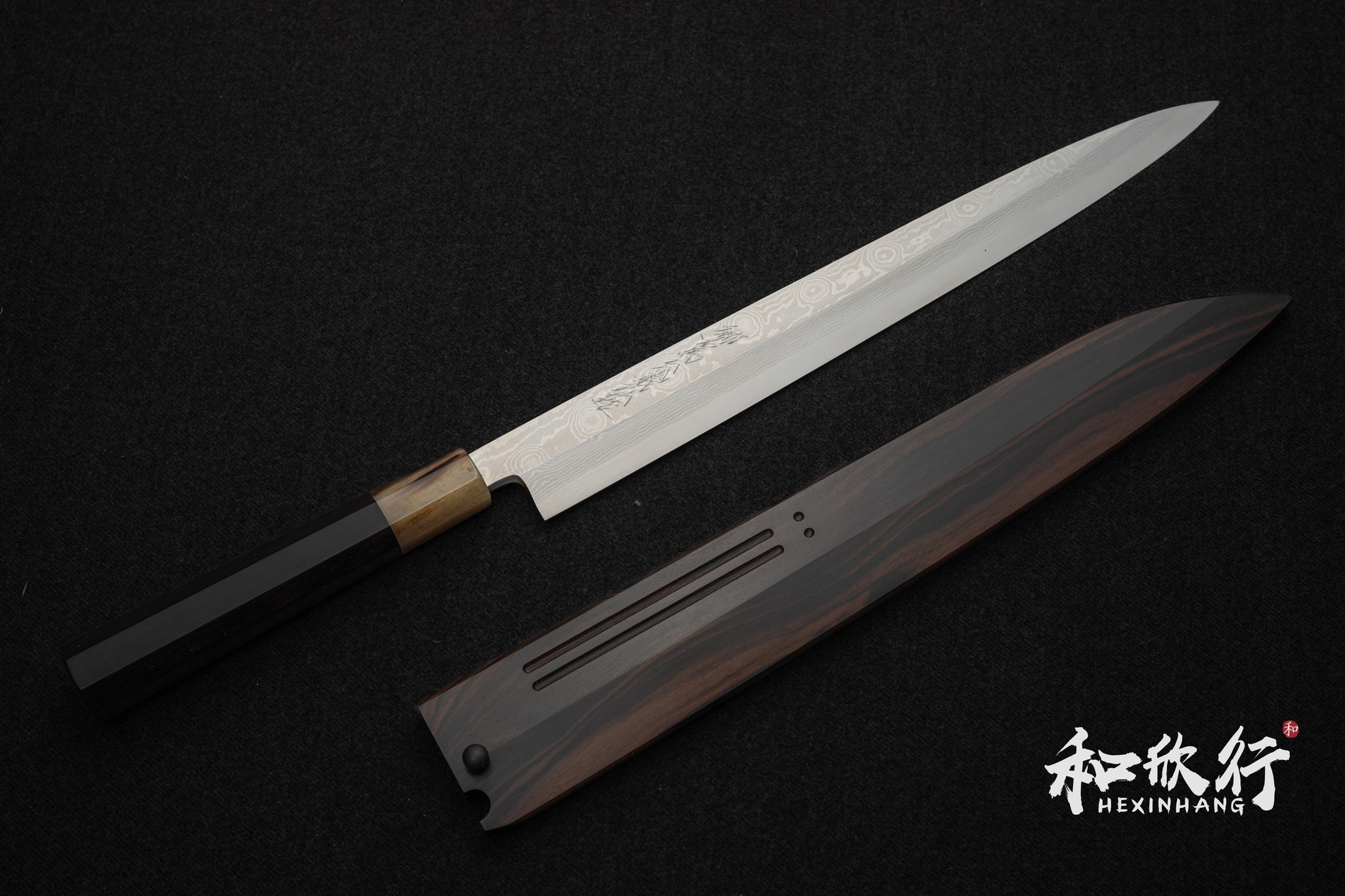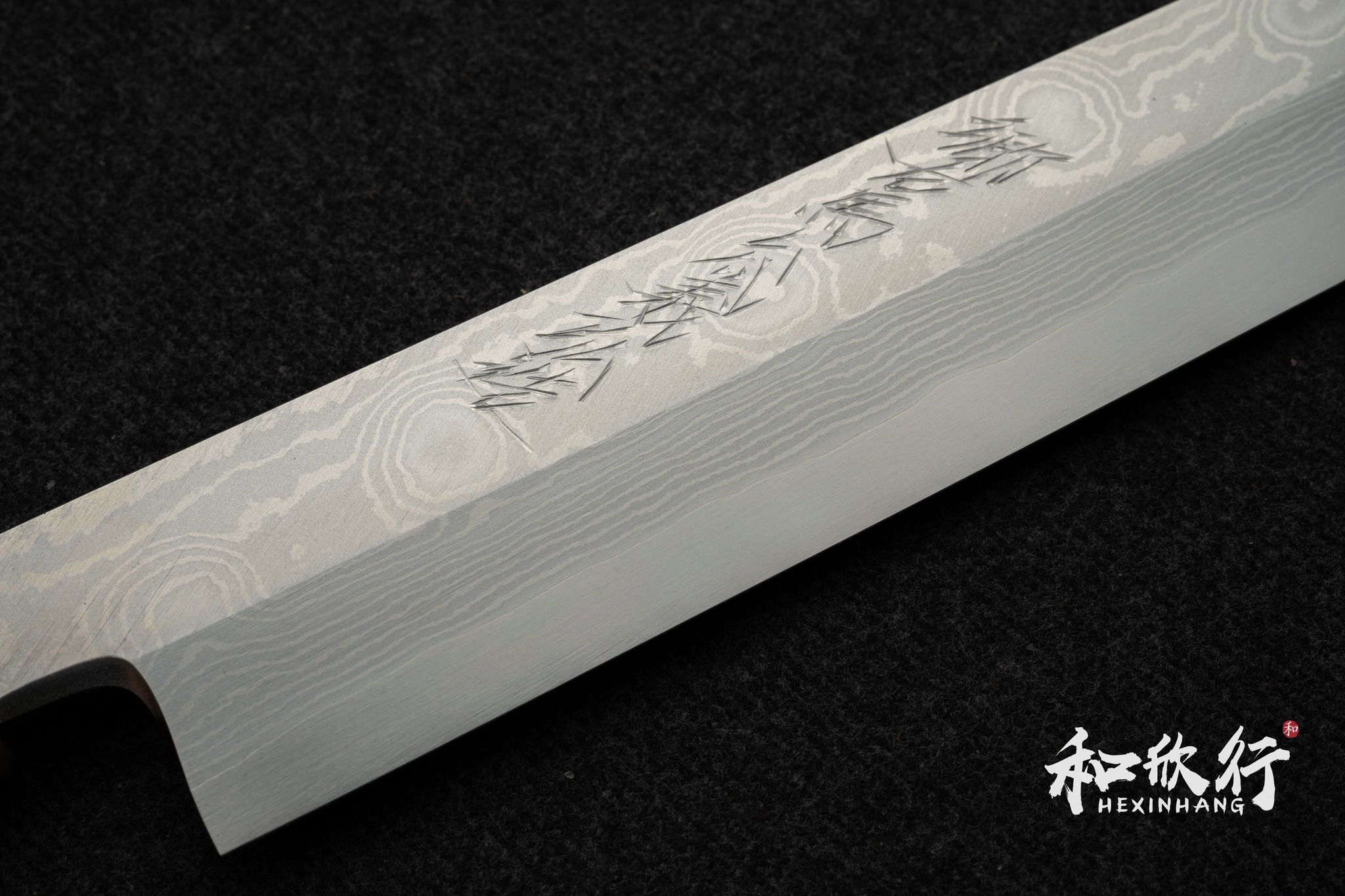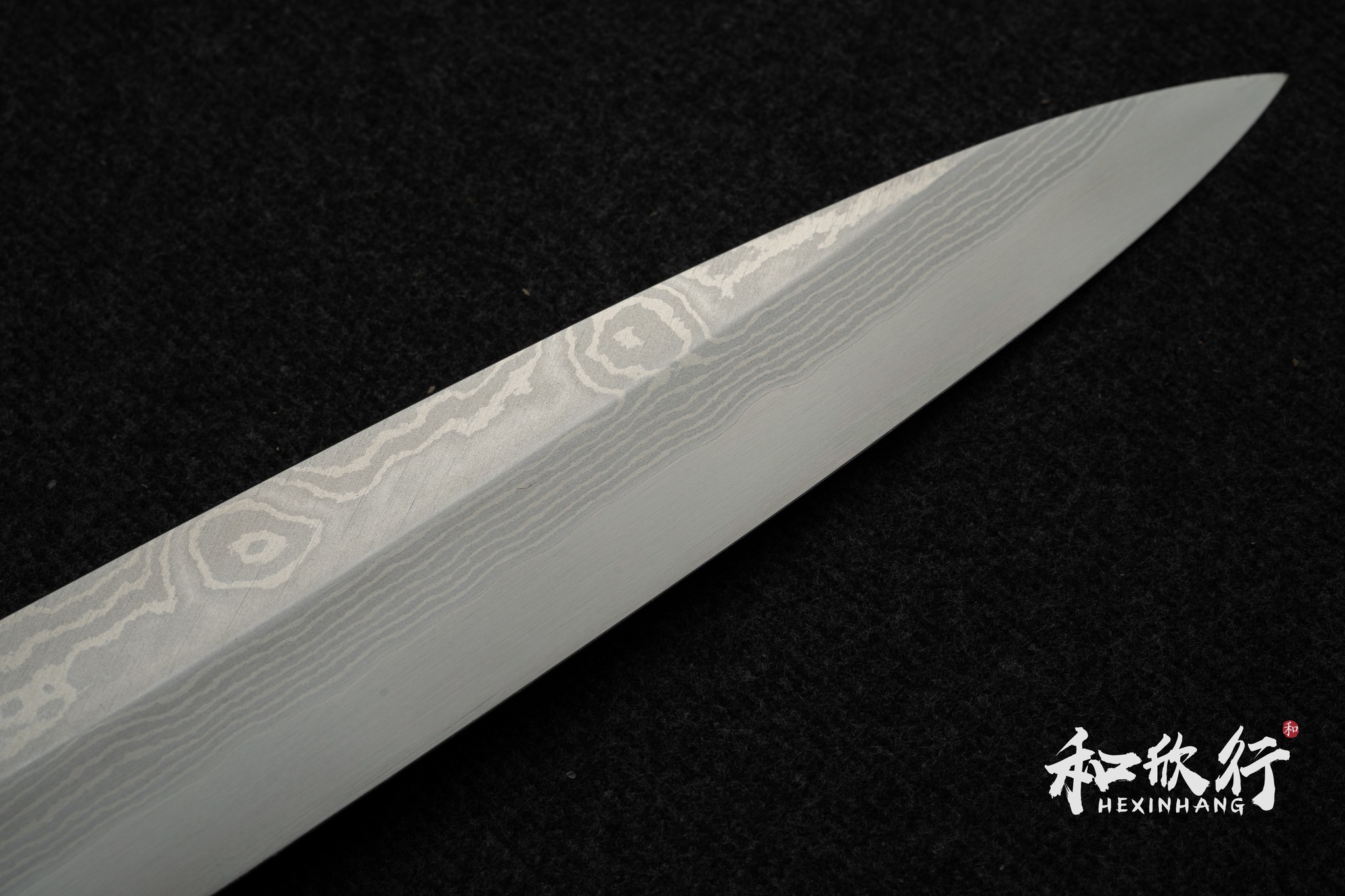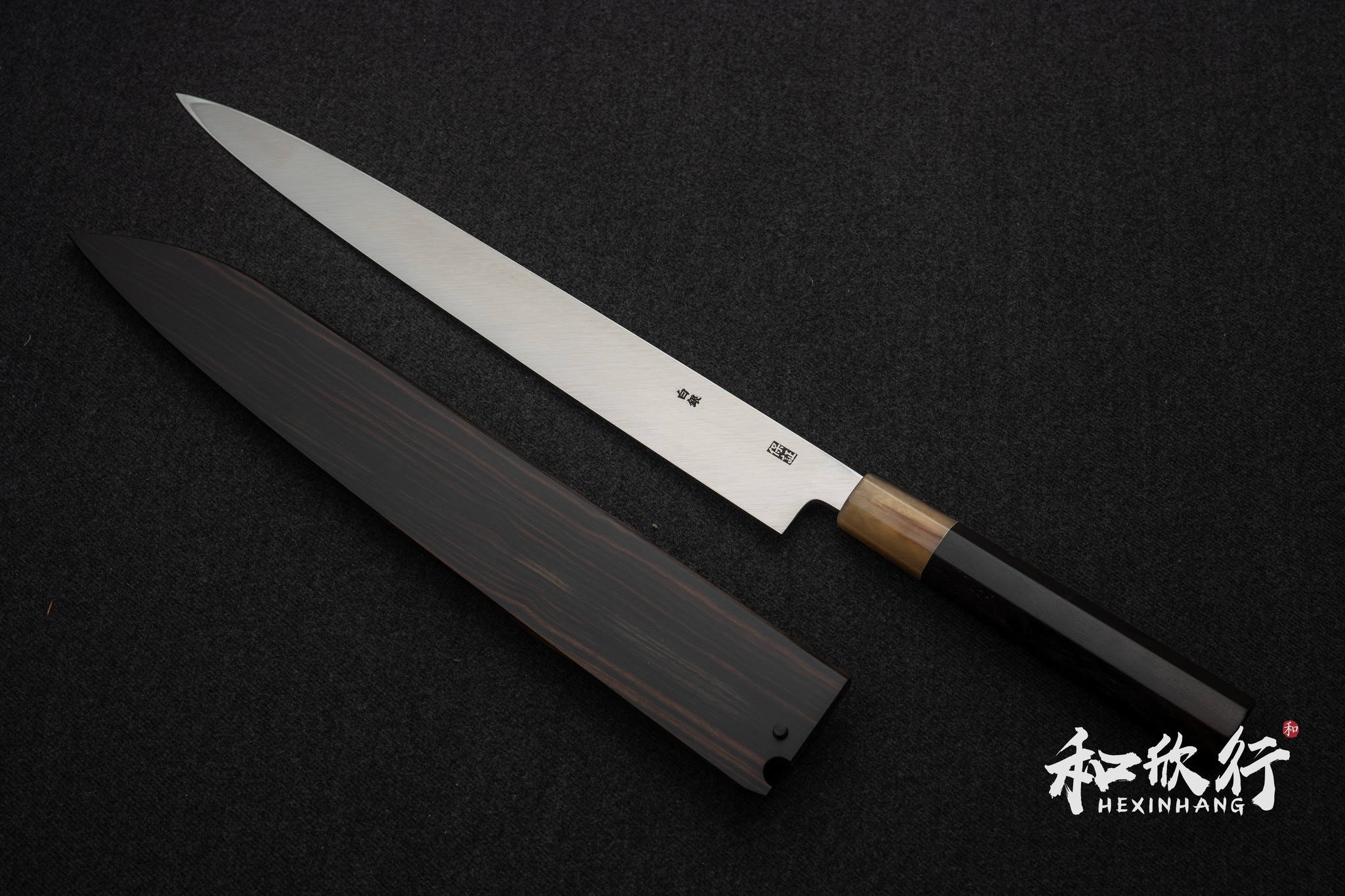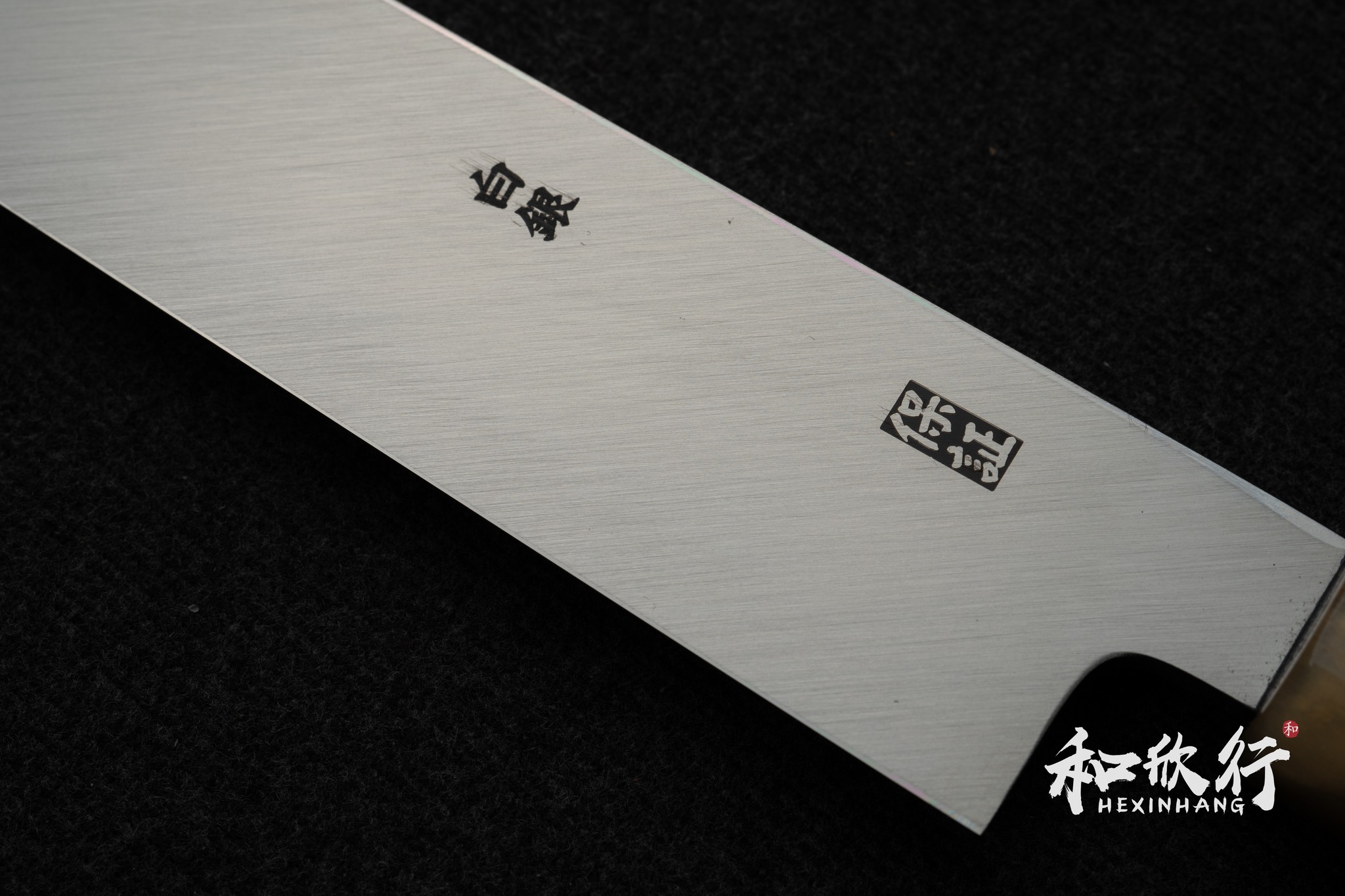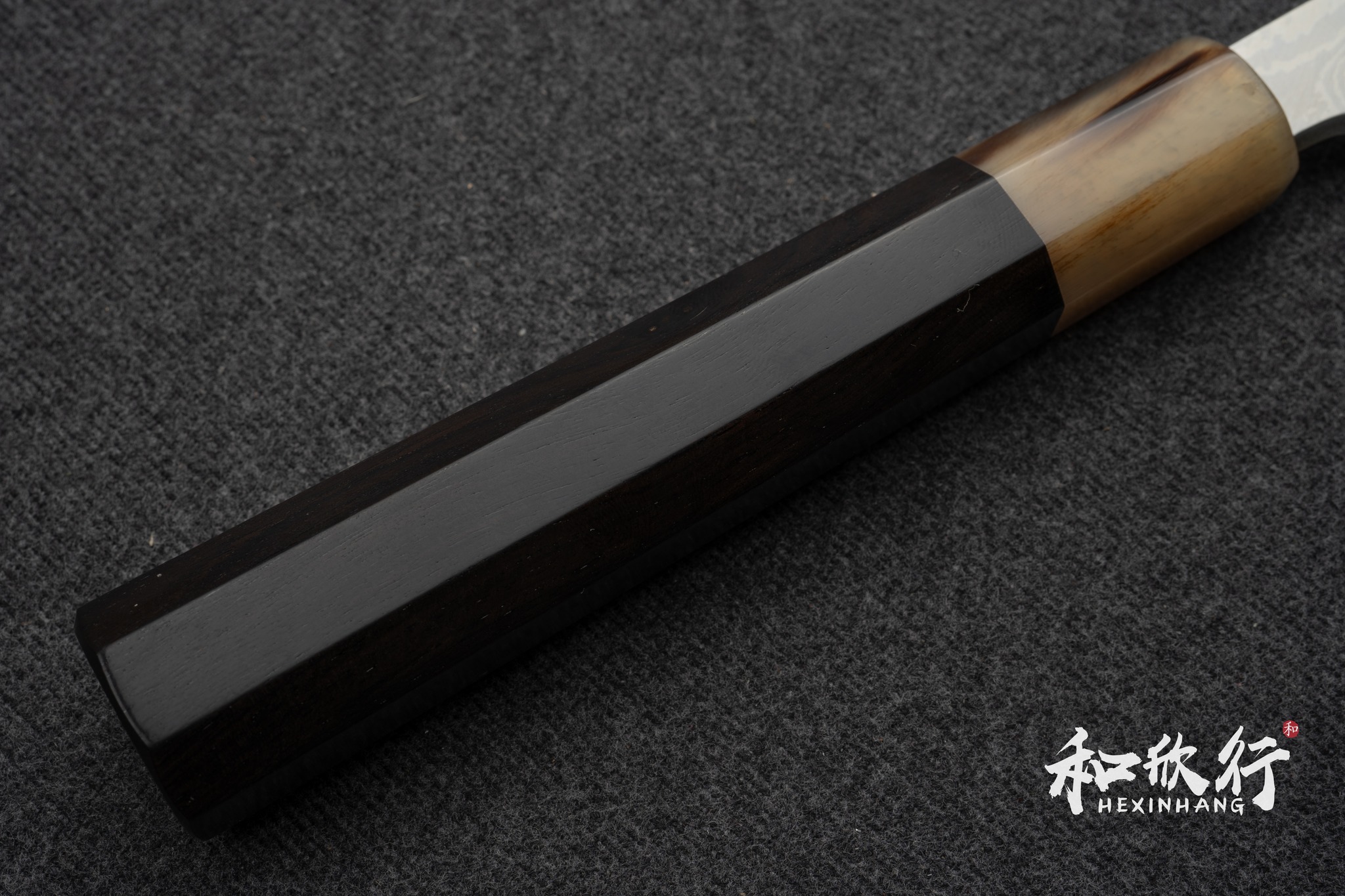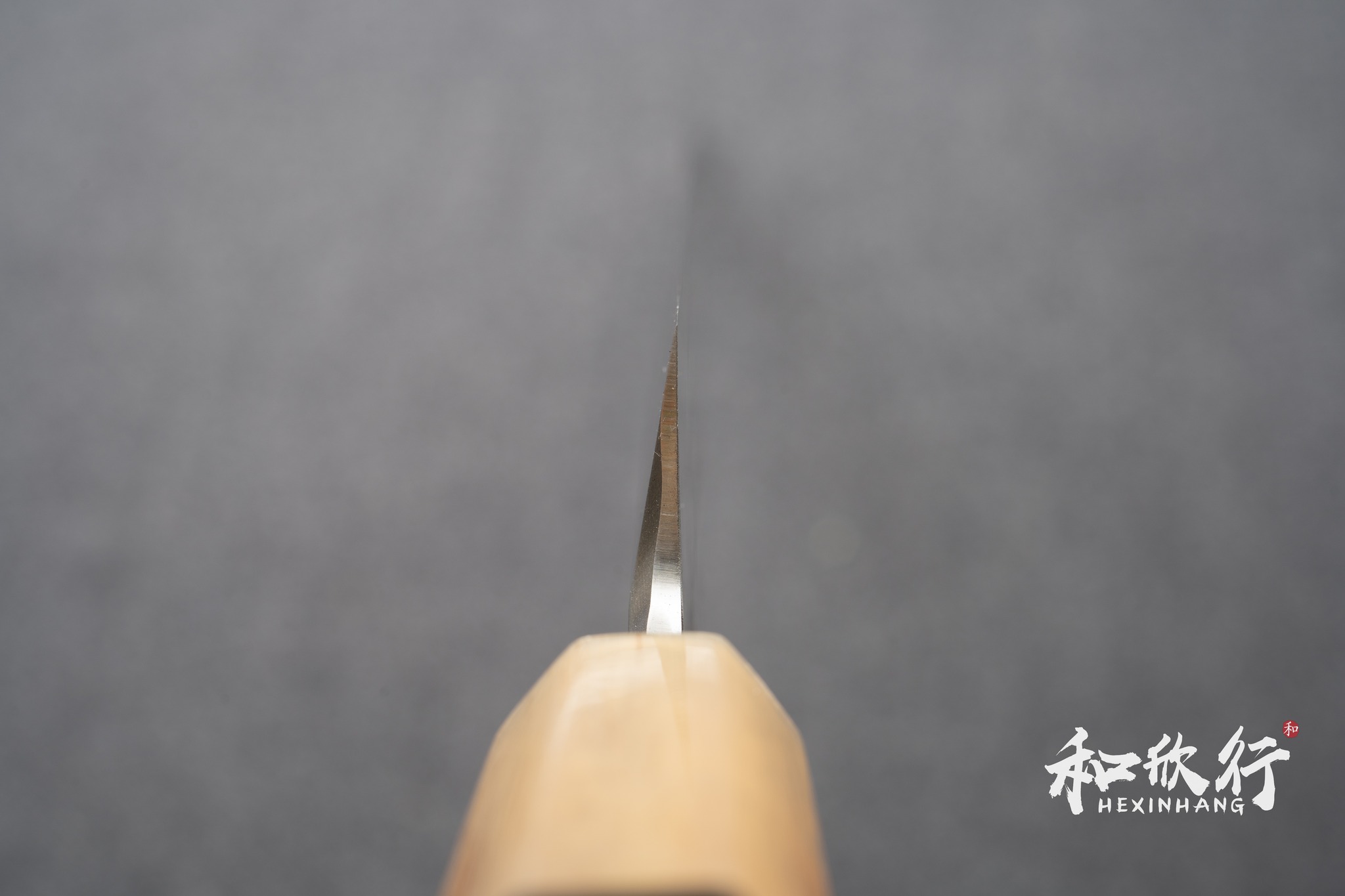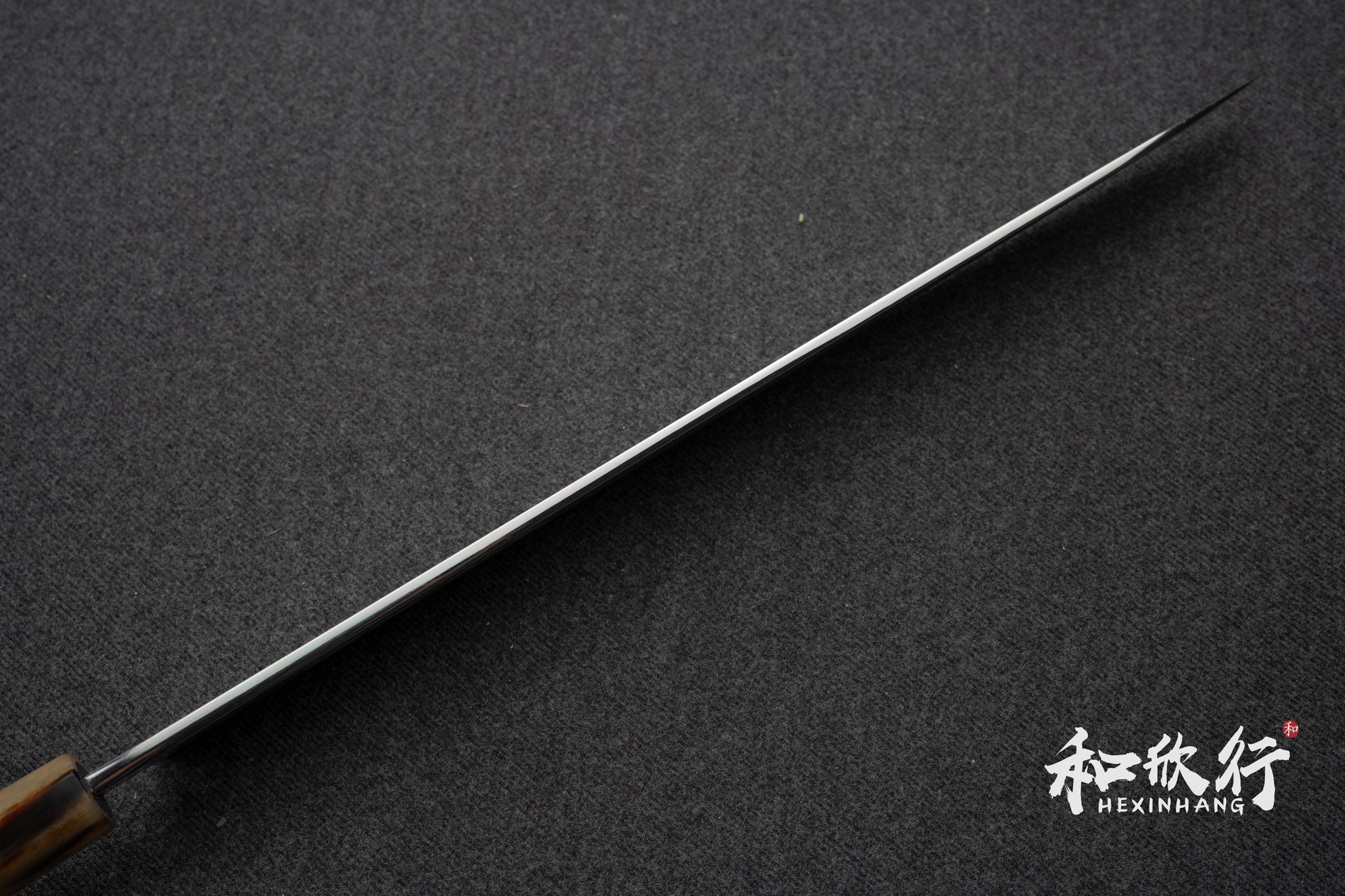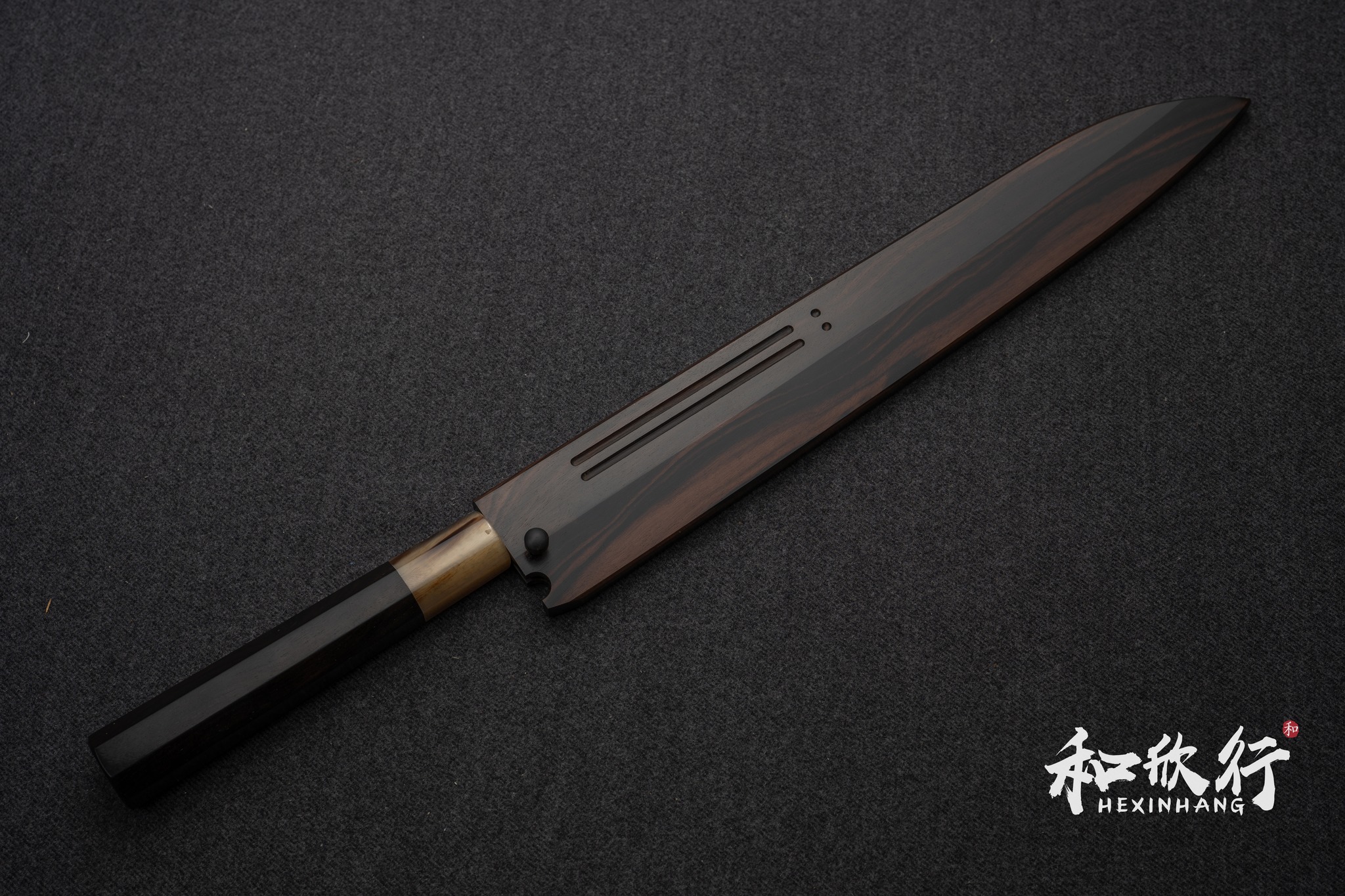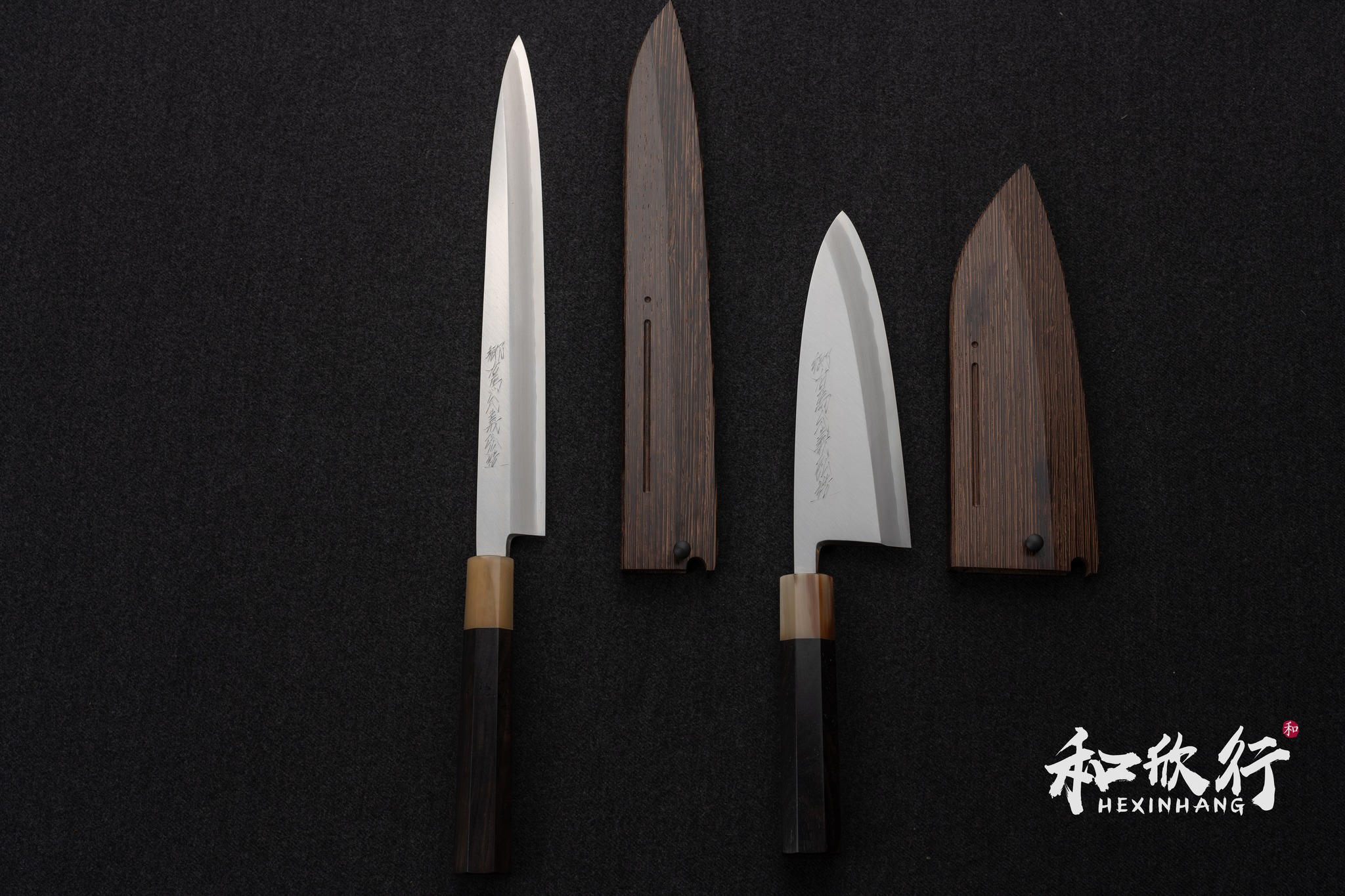
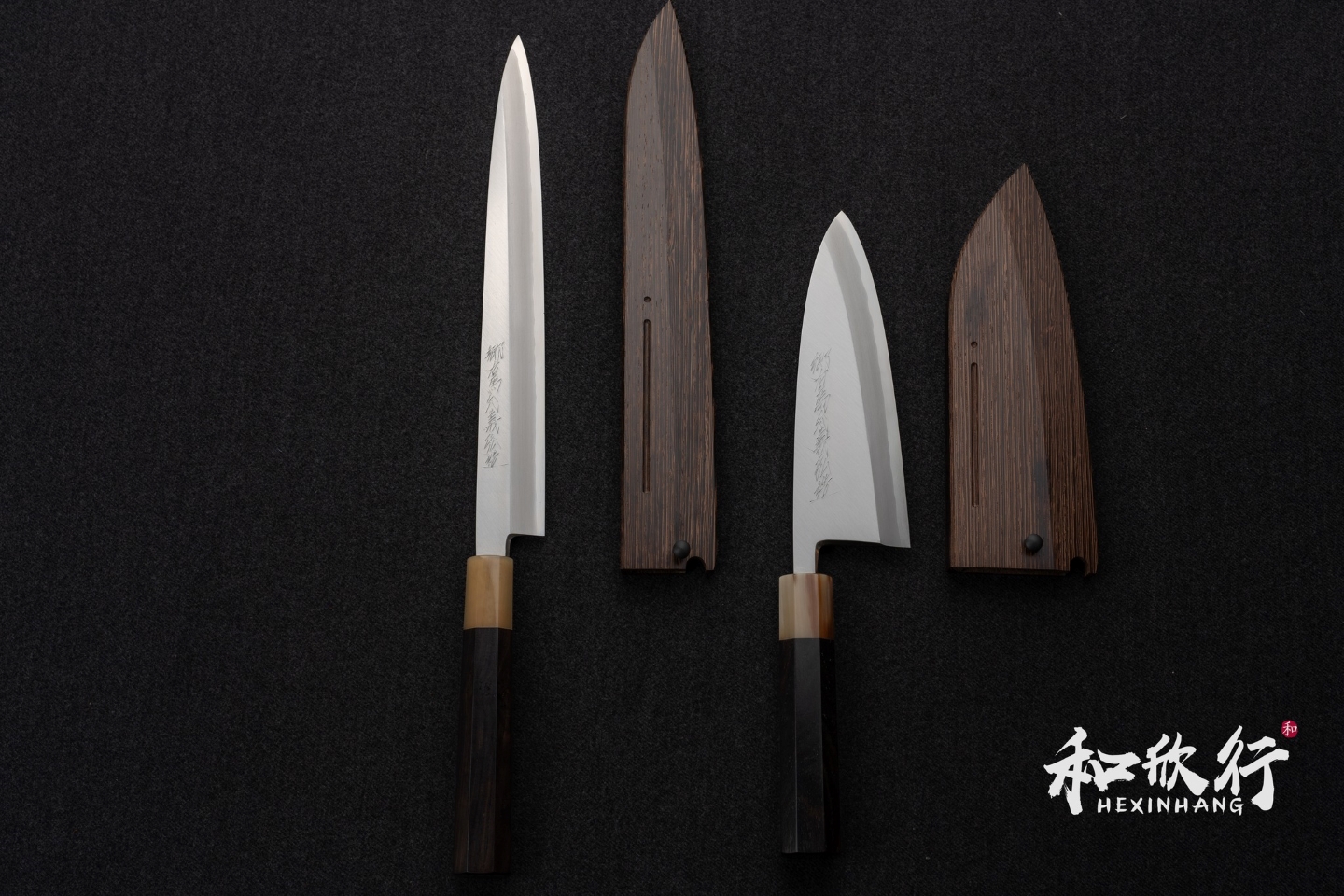
山脇刃物 郷右馬允義弘作 銀三鋼 墨流 正夫柳刃 270mm / 300mm
售價:
其他柄:
可加購升級以下連結之刀柄:
(木紋顏色與水牛口輪為天然材質,隨機出貨,無法指定顏色)
刀柄升級連結
在公元401至500年的古墳時代,鍛鐵技術傳入堺地區,自平安時代末期流傳下來,後來以刻煙斗煙管的煙草刀而聞名。隨著江戶時代的發展,堺成為專業廚刀的誕生地,尤其是用於處理魚類的出刃包丁。
「名刀三作」
自室町時代開始,本阿彌光悦在《亨保名物帳》中記載了三把名刀:
「正国的煩惱與夢想」
傳說正国鍛匠深受郷右馬允義弘刀風啟發,追求極致技藝,並在夢中得到靈感,最終完成出色刀刃,將自己視為郷右馬允義弘的技術傳承者,成立了山脇刃物製作所。
「本焼包丁的傳承」
此技藝傳承至今,成為堺地區傳統工藝的代表。
此內容摘錄自《郷右馬允義弘由來の書》,由住吉大社權宮司敷田年博於昭和54年編寫。
Yamawaki Hamono Goh Umanosuke Yoshihiro Silver-3 Steel Mokume Yanagiba 270mm / 300mm
Steel Material: Silver-3 Steel Mokume
Forged by: Traditional Craft Artisan Shogo Yamatsuka
Specifications: 270mm / 300mm
Sheath Options:
Handle: Ebony with White Buffalo Horn
(Handle ferrule and wood grain are naturally random, and the actual product will determine the final appearance.)
Price:
Optional Handles:
Upgrade to premium handles available via the link below:
(Wood grain and buffalo horn ferrule are made from natural materials and will be shipped randomly without color specification.)
Handle Upgrade Link
Around 401–500 AD during the Kofun period, iron forging techniques were introduced to the Sakai region. By the late Heian period, this craft had been refined, making Sakai renowned for crafting tobacco knives for carving pipes. During the Edo period, Sakai's thriving fishing industry drove the development of various culinary knives, including the deba bocho for fish processing.
"The Three Famous Swords"
Since the Muromachi period, Hon'ami Koetsu described the three famous swords in his book Kyōhō Meibutsu Chō:
"The Struggles and Dreams of Masakuni"
A tale recounts the struggles of Masakuni, a blacksmith inspired by the style of Gō Umanojō Yoshihiro. Through a series of dreams involving turtles and cranes, he ultimately crafted a remarkable blade, declaring himself the successor to Gō Umanojō Yoshihiro's legacy. This led to the establishment of Yamawaki Hamono.
"The Tradition of Hon-yaki Knives"
This craft was passed down through generations, becoming a cornerstone of Sakai's traditional knife-making.
This summary is based on The Origins of Gō Umanojō Yoshihiro, compiled by Sumiyoshi Taisha's Chief Priest Toshihiro Shikida in 1979.
